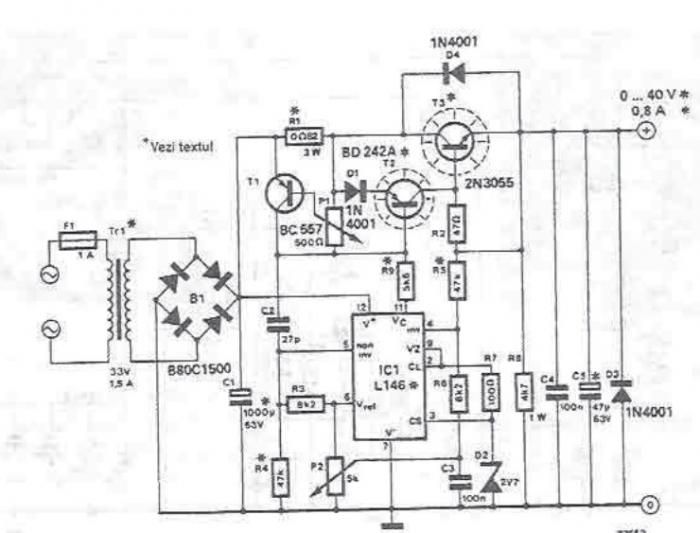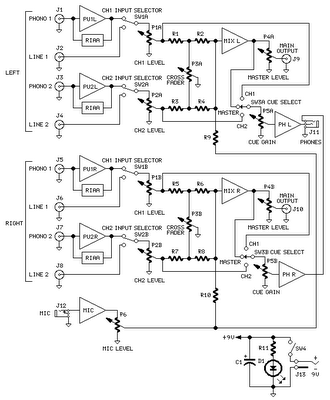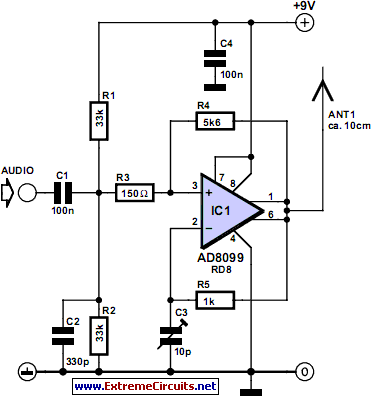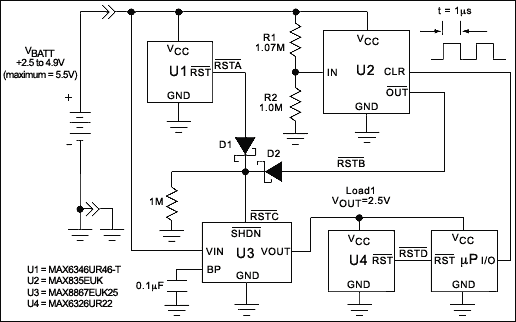
Two Simple 24-Hour Timer Circuit Schematics
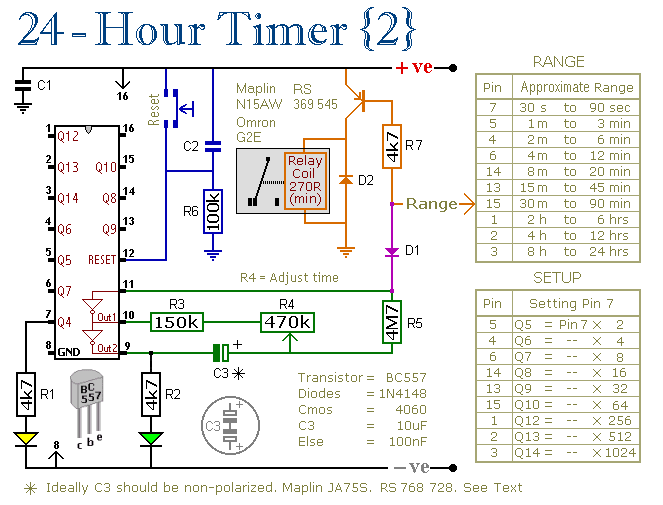
These two circuits are multi-range timers that offer periods of up to 24 hours and beyond. They can function as repeating timers or single-shot timers. Both circuits are fundamentally the same, with the primary distinction being their behavior in single-shot mode. In this mode, when the preset time elapses, Version 1 energizes the relay, while Version 2 de-energizes it. The first version consumes less power while the timer operates, whereas the second version consumes less power after the timer has stopped. Selection should be based on the specific application requirements. The CMOS 4060 is a 14-bit binary counter; however, only ten bits are connected to output pins, leaving bits Q1, Q2, Q3, and Q11 accessible but unreachable. By adjusting resistor R4, the frequency of the oscillator can be modified, allowing control over the count progression speed. This means the duration until any output pin goes high can be determined. For repeating mode operation, diode D1 can be omitted, allowing the count to continue indefinitely, with the output pin switching the transistor on and off at regular intervals. Setting a long time period through trial and error can be tedious; hence, using the provided setup tables is recommended to calculate the time for Pin 7 to go high. The setup tables for both schematics are interchangeable, representing the same equation in different formats. For instance, to achieve a 9-hour period, the range table indicates that output at Pin 2 should go high after 32,400 seconds (9 x 60 x 60). The setup table suggests dividing this by 512, resulting in approximately 63 seconds. Adjust R4 so that the yellow LED lights up 63 seconds after power is applied, which will yield an output at Pin 2 after about 9 hours. It is important not to use the on-board relay to switch mains voltage due to insufficient isolation between relay contacts and low-voltage components. For switching mains voltage, a suitably rated relay should be mounted securely away from the board. Ideally, capacitor C3 should be non-polarized; however, a standard electrolytic capacitor can be used if it has minimal leakage in the reverse direction. Alternatively, two 22uF capacitors can be connected back to back to simulate a non-polarized 10uF capacitor. The reset button is optional but should not be used during setup, as the time for the yellow LED to light must be measured from the moment power is applied. Although resistors R1, R2, and the two LEDs assist with setup, they are not essential for timer operation. To reduce power consumption, these components can be disconnected after setup completion. The timers are designed for a 12-volt supply, but both circuits can operate within a range of 5 to 15 volts, provided a suitable relay is used. Powering the circuit initiates the timer, which can be reset at any time by a brief interruption of the power supply. Support material for this circuit includes a step-by-step guide for circuit board construction, a parts list, a detailed circuit description, and additional resources.
The multi-range timer circuits utilize the CMOS 4060 binary counter, which is adept at providing precise timing intervals through its adjustable oscillator frequency. The design allows for flexibility in application, catering to both single-shot and repeating timer functionalities. The choice between Version 1 and Version 2 hinges on power consumption preferences during operation and post-timer activity.
The oscillator's frequency adjustment via R4 is critical in determining the timing accuracy and flexibility of the device. The output behavior can be tailored based on the application requirements, making this circuit suitable for various timing applications. The omission of D1 for repeating mode simplifies the design, allowing for continuous operation without interruption.
The setup tables serve as a valuable tool for users, facilitating quick calculations for desired timing intervals. The example provided illustrates how to achieve a specific timing output using straightforward calculations. The emphasis on not using the on-board relay for mains voltage switching highlights the importance of safety and proper circuit isolation, ensuring that users are aware of potential hazards.
Capacitor selection is also addressed, emphasizing the need for suitable components to maintain circuit integrity. The use of back-to-back capacitors to simulate non-polarized behavior offers a practical solution for circuit designers. The optional reset button and the recommendation for power consumption reduction after setup further enhance the usability of the circuit.
Overall, the multi-range timer circuits are versatile, efficient, and user-friendly, making them suitable for a wide range of applications in timing and control systems. The comprehensive support material provided ensures that users can effectively construct and utilize the timer circuits with confidence.These two circuits are multi-range timers offering periods of up to 24 hours and beyond. They can be used as repeating timers - or as single-shot timers. Both circuits are essentially the same. The main difference between them is their behaviour in single-shot mode. In single-shot mode - when the preset time has elapsed - Version 1 energizes the r elay and Version 2 de-energizes the relay. The first uses less power while the timer is running - and the second uses less power after the timer has stopped. Pick the one that best suits your application. The Cmos 4060 is a 14-bit binary counter. However - only ten of those bits are connected to output pins. The remaining bits - Q1, Q2, Q3 and Q11 - do exist. You just can`t reach them. By adjusting R4 you can alter the frequency of the oscillator. So you can control the speed at which the count progresses. In other words - you can decide how long it will take for any given output pin to go high. If you want to use the timer in repeating mode - simply leave out D1. The count will carry on indefinitely. And the output pin will continue to switch the transistor on and off - at the same regular time intervals.
Using "Trial and Error" to set a long time period would be very tedious. A better solution is to use the Setup tables provided - and calculate the time required for Pin 7 to go high. The Setup tables on both schematics are interchangeable. They`re just two different ways of expressing the same equation. For example, if you want a period of 9 Hours - the Range table shows that you can use the output at Pin 2.
You need Pin 2 to go high after 9 x 60 x 60 = 32 400 seconds. The Setup table tells you to divide this by 512 - giving about 63 seconds. Adjust R4 so that the Yellow LED lights 63 seconds after power is applied. This will give an output at Pin 2 after about 9 Hours. Do not use the "on-board" relay to switch mains voltage. The board`s layout does not offer sufficient isolation between the relay contacts and the low-voltage components. If you want to switch mains voltage - mount a suitably rated relay somewhere safe - Away From The Board.
Ideally C3 should be non-polarized - but a regular electrolytic will work - provided it doesn`t leak too badly in the reverse direction. Alternatively - you can simulate a non-polarized 10uF capacitor by connecting two 22uF capacitors back to back - as shown.
The reset button is optional - but it should NOT be used during setup. The time it takes for the Yellow LED to light MUST be measured from the moment power is applied. Although R1, R2 and the two LEDs help with the setup - they are not necessary to the operation of the timer. If you want to reduce the power consumption - disconnect them once you`ve completed the setup. The timers were designed for a 12-volt supply. However - provided a suitable relay is used - both circuits will work at anything from 5 to 15-volts.
Applying power starts the timer. And it can be reset at any time by a brief interruption of the power supply. The Support Material for this circuit includes a step-by-step guide to the construction of the circuit-board - a parts list - a detailed circuit description - and more. 🔗 External reference
The multi-range timer circuits utilize the CMOS 4060 binary counter, which is adept at providing precise timing intervals through its adjustable oscillator frequency. The design allows for flexibility in application, catering to both single-shot and repeating timer functionalities. The choice between Version 1 and Version 2 hinges on power consumption preferences during operation and post-timer activity.
The oscillator's frequency adjustment via R4 is critical in determining the timing accuracy and flexibility of the device. The output behavior can be tailored based on the application requirements, making this circuit suitable for various timing applications. The omission of D1 for repeating mode simplifies the design, allowing for continuous operation without interruption.
The setup tables serve as a valuable tool for users, facilitating quick calculations for desired timing intervals. The example provided illustrates how to achieve a specific timing output using straightforward calculations. The emphasis on not using the on-board relay for mains voltage switching highlights the importance of safety and proper circuit isolation, ensuring that users are aware of potential hazards.
Capacitor selection is also addressed, emphasizing the need for suitable components to maintain circuit integrity. The use of back-to-back capacitors to simulate non-polarized behavior offers a practical solution for circuit designers. The optional reset button and the recommendation for power consumption reduction after setup further enhance the usability of the circuit.
Overall, the multi-range timer circuits are versatile, efficient, and user-friendly, making them suitable for a wide range of applications in timing and control systems. The comprehensive support material provided ensures that users can effectively construct and utilize the timer circuits with confidence.These two circuits are multi-range timers offering periods of up to 24 hours and beyond. They can be used as repeating timers - or as single-shot timers. Both circuits are essentially the same. The main difference between them is their behaviour in single-shot mode. In single-shot mode - when the preset time has elapsed - Version 1 energizes the r elay and Version 2 de-energizes the relay. The first uses less power while the timer is running - and the second uses less power after the timer has stopped. Pick the one that best suits your application. The Cmos 4060 is a 14-bit binary counter. However - only ten of those bits are connected to output pins. The remaining bits - Q1, Q2, Q3 and Q11 - do exist. You just can`t reach them. By adjusting R4 you can alter the frequency of the oscillator. So you can control the speed at which the count progresses. In other words - you can decide how long it will take for any given output pin to go high. If you want to use the timer in repeating mode - simply leave out D1. The count will carry on indefinitely. And the output pin will continue to switch the transistor on and off - at the same regular time intervals.
Using "Trial and Error" to set a long time period would be very tedious. A better solution is to use the Setup tables provided - and calculate the time required for Pin 7 to go high. The Setup tables on both schematics are interchangeable. They`re just two different ways of expressing the same equation. For example, if you want a period of 9 Hours - the Range table shows that you can use the output at Pin 2.
You need Pin 2 to go high after 9 x 60 x 60 = 32 400 seconds. The Setup table tells you to divide this by 512 - giving about 63 seconds. Adjust R4 so that the Yellow LED lights 63 seconds after power is applied. This will give an output at Pin 2 after about 9 Hours. Do not use the "on-board" relay to switch mains voltage. The board`s layout does not offer sufficient isolation between the relay contacts and the low-voltage components. If you want to switch mains voltage - mount a suitably rated relay somewhere safe - Away From The Board.
Ideally C3 should be non-polarized - but a regular electrolytic will work - provided it doesn`t leak too badly in the reverse direction. Alternatively - you can simulate a non-polarized 10uF capacitor by connecting two 22uF capacitors back to back - as shown.
The reset button is optional - but it should NOT be used during setup. The time it takes for the Yellow LED to light MUST be measured from the moment power is applied. Although R1, R2 and the two LEDs help with the setup - they are not necessary to the operation of the timer. If you want to reduce the power consumption - disconnect them once you`ve completed the setup. The timers were designed for a 12-volt supply. However - provided a suitable relay is used - both circuits will work at anything from 5 to 15-volts.
Applying power starts the timer. And it can be reset at any time by a brief interruption of the power supply. The Support Material for this circuit includes a step-by-step guide to the construction of the circuit-board - a parts list - a detailed circuit description - and more. 🔗 External reference
